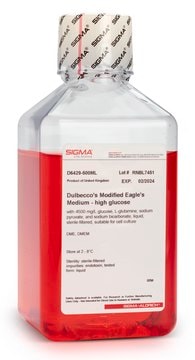All Photos(1)
About This Item
Empirical Formula (Hill Notation):
C6H5Cl
CAS Number:
Molecular Weight:
112.56
Beilstein:
605632
EC Number:
MDL number:
UNSPSC Code:
12352101
PubChem Substance ID:
Recommended Products
grade
SAJ special grade
vapor density
3.86 (vs air)
vapor pressure
11.8 mmHg ( 25 °C)
Assay
≥99.5%
form
liquid
autoignition temp.
1178 °F
expl. lim.
7.1 %
availability
available only in Japan
refractive index
n20/D 1.524 (lit.)
pH
7
bp
132 °C (lit.)
mp
−45 °C (lit.)
density
1.106 g/mL at 25 °C (lit.)
SMILES string
Clc1ccccc1
InChI
1S/C6H5Cl/c7-6-4-2-1-3-5-6/h1-5H
InChI key
MVPPADPHJFYWMZ-UHFFFAOYSA-N
Looking for similar products? Visit Product Comparison Guide
Signal Word
Warning
Hazard Statements
Precautionary Statements
Hazard Classifications
Acute Tox. 4 Inhalation - Aquatic Chronic 2 - Flam. Liq. 3 - Skin Irrit. 2
Storage Class Code
3 - Flammable liquids
WGK
WGK 2
Flash Point(F)
80.6 °F
Flash Point(C)
27 °C
Personal Protective Equipment
dust mask type N95 (US), Eyeshields, Gloves
Choose from one of the most recent versions:
Already Own This Product?
Find documentation for the products that you have recently purchased in the Document Library.
Kyeongil Hwang et al.
Advanced materials (Deerfield Beach, Fla.), 27(7), 1241-1247 (2015-01-13)
Fully printed perovskite solar cells are demonstrated with slot-die coating, a scalable printing method. A sequential slot-die coating process is developed to produce efficient perovskite solar cells and to be used in a large-scale roll-to-roll printing process. All layers excluding
Zhongbing Chen et al.
Chemosphere, 89(6), 724-731 (2012-07-27)
In order to characterize the effect of vegetation on performance of constructed wetlands (CWs) treating low and high chlorinated hydrocarbon, two pilot-scale horizontal subsurface flow (HSSF) CWs (planted with Phragmites australis and unplanted) treating sulphate rich groundwater contaminated with MCB
Wei-Chao Chen et al.
ACS applied materials & interfaces, 7(8), 4616-4622 (2015-02-11)
Controlled dispersion of single-walled carbon nanotubes (SWCNTs) in common solvents is a challenging issue, especially for the rising need of low cost flexible transparent conducting films (TCFs). Utilizing conductive polymer as surfactant to facilitate SWCNTs solubility is the most successful
Daniel Giesen et al.
Environmental toxicology and chemistry, 31(5), 1136-1142 (2012-03-21)
To meet the goals of Registration, Evaluation, Authorisation, and Restriction of Chemicals (REACH) as formulated by the European Commission, fast and resource-effective tools are needed to predict the toxicity of compounds in the environment. We developed quantitative structure-activity relationships (QSARs)
Chuan-Yu Qin et al.
Water environment research : a research publication of the Water Environment Federation, 85(2), 133-140 (2013-03-12)
A two-dimensional laboratory sand tank was installed to study the remediation efficiency of surfactant-enhanced air sparging (-SEAS) coupled with soil vapor extraction (SVE) in nonaqueous phase liquid (NAPL) polluted sites. During initial stages of remediation, it was more reasonable to
Our team of scientists has experience in all areas of research including Life Science, Material Science, Chemical Synthesis, Chromatography, Analytical and many others.
Contact Technical Service










